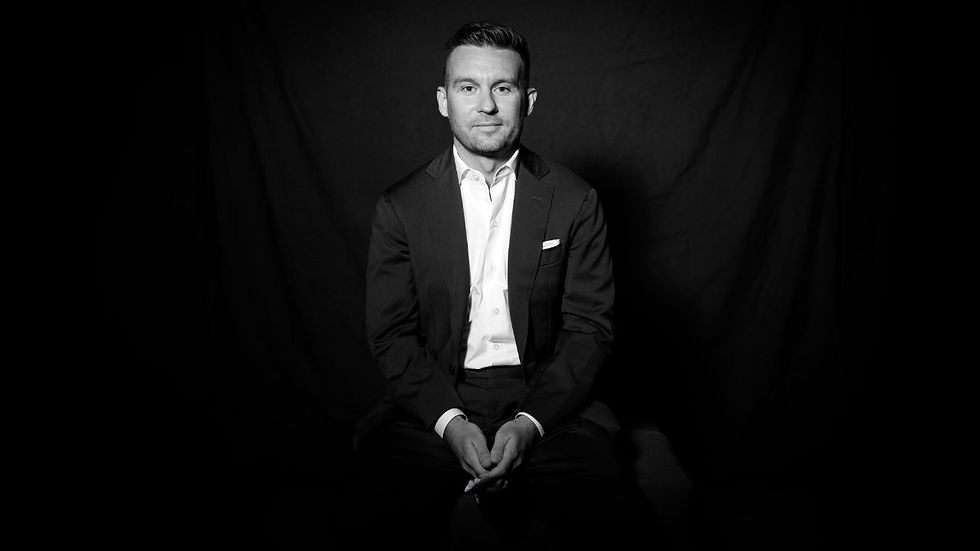Leadership Fatigue: The Silent Strain Reshaping Real Estate
- Aug 17
- 3 min read

For many in leadership, the idea of being “always on” has become the norm. Decisive, accessible, and endlessly resilient – the demands sound admirable on paper, but the hidden cost is often overlooked.
Leadership fatigue is a growing challenge across the industry, and for BresicWhitney CEO Thomas McGlynn, it’s not an abstract HR concept. It’s something he’s lived through firsthand.
The Weight of Constant Decision-Making
McGlynn reflects that leadership fatigue often shows itself through decision fatigue. The role requires leaders to make firm, fair calls every single day – from the smallest operational matters to high-stakes strategic moves.
Over time, the sheer relentlessness of those decisions can wear down even the most driven individuals.
He notes that the warning signs are often visible long before true burnout sets in. The leader who’s always the first in the office and the last to leave, while still trying to juggle family responsibilities, may already be stretched beyond what’s sustainable.
The Emotional Demands of Leadership
Beyond strategy and market share, McGlynn emphasises the emotional availability required of leaders.
Real estate leadership is as much about listening, empathising, and motivating as it is about numbers and performance. Carrying the stress of others while managing your own is no small task, and it consumes enormous emotional capacity.
This is why he believes boundaries aren’t optional; they’re essential. Without them, the constant demands of a 24/7 marketplace – fuelled by client expectations, technology, and competition – can easily consume a leader’s energy.
Recognising the Signs Before the Crash
The early signs of fatigue can be subtle. A dip in decision quality, an uncharacteristic lapse in patience, or a shift in routine – arriving earlier, staying later, skipping breaks – all point to a leader pushing past sustainable limits.
McGlynn admits he has faced these moments throughout his career. Each time, the realisation has been the same: the approach that worked yesterday may not be what gets you where you want to go tomorrow.
Continuing down the same path risks not only burnout but also broader health consequences.
Fatherhood and a Shift in Priorities
For McGlynn, becoming a father was the turning point. The demands of parenthood forced a reassessment of how he allocated his time and energy.
The seven-day work weeks that once felt necessary gave way to more deliberate boundaries. Sundays, for example, are now firmly reserved for family.
He describes this shift not as a compromise, but as a conscious choice to protect what matters most.
For him, being a good leader is inseparable from being a present father and partner – and the discipline to protect that balance has made him better in all three roles.
Building an “Ideal Week”
Part of managing leadership fatigue, McGlynn says, comes down to structure.
He outlines what an “ideal week” looks like for him, then sticks to it. Without that framework, it’s all too easy to get pulled into endless demands and lose sight of the bigger picture.
The key is having a decision-making compass – knowing when it’s appropriate to bend the rules and when to hold the line. Without it, life controls you, rather than you controlling life.
Modelling Balance for the Team
The impact of those choices doesn’t stop at the leadership level.
Teams who see their leaders model balance are more likely to feel valued and supported, which often translates to stronger performance.
McGlynn believes productivity comes not from pushing people harder but from creating an environment where they feel respected and inspired to give their best.
Slowing Down to Speed Up
One of his guiding principles is deceptively simple: sometimes you need to slow down to speed up.
For entrepreneurs and ambitious leaders, that can feel counterintuitive. Yet McGlynn argues that stepping back to work on the business – rather than constantly being swallowed by the daily grind – is what allows leaders to drive sustainable growth.
Success, he says, should not be defined by volume or financials alone. True success is building a high-performing business without burning out the people who make it possible, leaders included.















Comments